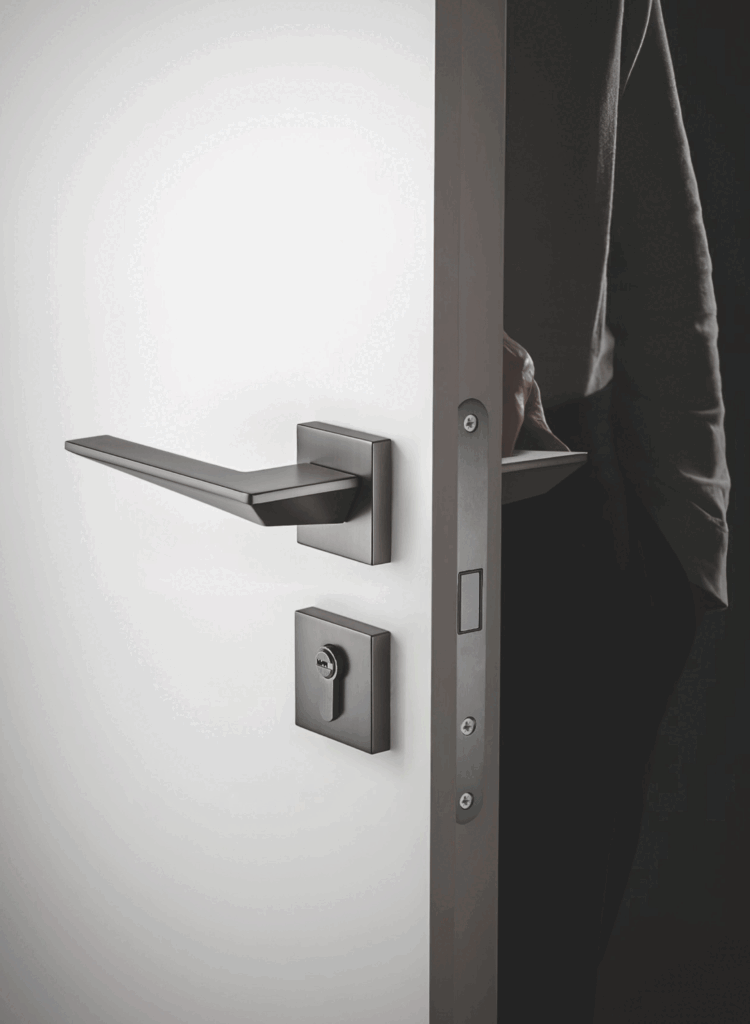When it comes to choosing between aluminium and zamak handles, many hardware buyers are faced with an exciting dilemma! They’re curious to know how the different materials might affect the handle’s longevity and are keen to find the best products on the market. So, is there a significant difference between aluminium and zamak handles?
The answer is: no. Aluminum handles are simply lighter and cheaper than zinc handles, with the same function, the same service life and the same appearance after surface colour treatment.
End consumers don’t care what the handle is made of, they care about design, longevity and price.
But as the most professional hardware company, we think more. This article will from the following aspects, and you talk in detail about the characteristics of the material differences, differences in the production process.
Material Properties
·Melting Point
Most door handles use the aluminium alloy ADC12, which has a melting point of about 600°C, while zinc alloy melts at around 400°C. With modern die-casting machines that use electric furnaces, the lower melting point of zinc alloy means it uses less electricity and has fewer mould requirements.
·Density
Aluminum alloy has a density of 2.7 g/cm³, while zinc alloy has a density of 6.6 g/cm³. Therefore, aluminum handles are significantly lighter than zinc handles of the same shape.
·Cost
According to the London Metal Exchange (LME) prices, zinc is approximately 17% more expensive than aluminum.

Data Source: London Metal Exchange
Historical trends show that zinc prices are consistently higher than aluminum prices.
Production Process
·Die-Casting Comparison
The die-casting process presents a challenge due to the inherent fluidity limitations of the liquid aluminium alloy, necessitating a complex design for the mould exhaust. Consequently, some aluminium handle blanks may exhibit surface imperfections, such as small bubble holes, which are regarded as defects and require re-melting. Furthermore, the elevated melting point of aluminium increases the necessity for rigorous mould specifications.
In contrast, liquid zinc alloy has good fluidity and forms beautifully. The lower melting point of zinc alloy reduces the costs associated with moulds and maintenance. The cost of aluminium handle-to-die is two to five times more expensive than that of zinc handle-to-die.
·Polishing Comparison
The polishing process for both materials is identical, with no notable discrepancies.
A common misconception is that polishing aluminium alloy handles is a more cost-effective process than polishing zinc alloy handles. In order to reduce costs, some suppliers utilise inexpensive aluminium alloys as the material, with polishing merely serving to remove surface irregularities.
If the objective is to achieve an aesthetically pleasing result, the cost of polishing aluminium alloy door handles is comparable to that of zinc alloy handles.
·Electroplating Comparison
The process remains identical, and the final product is also the same. Regardless of whether the handle is composed of aluminium or zinc alloy, a variety of colours can be achieved through the processes of electroplating and painting.
Both processes are classified as rack plating. Due to the weight of the zinc alloy handle, the number of zinc alloy handles carried by a rack is less than that of aluminium handles. Consequently, there is a significant discrepancy in the electroplating price. A single rack can accommodate up to 24 zinc alloy handles, whereas it can accommodate up to 60 aluminium handles, which greatly distributes the cost.

Once the electroplating process is complete, the handle will typically exhibit a range of target colours. At this juncture, it is challenging to discern the material composition of the handle through visual observation.
·Lifespan Comparison
The lifespan of a handle is contingent upon the durability of the constituent parts, particularly the springs, rather than the intrinsic properties of the material itself. Testing has demonstrated that both zinc and aluminium handles are capable of withstanding 100,000 openings.
Conclusion
Aluminium handles are the perfect alternative to zinc handles!
They offer the same appearance and functionality at half the price, making them an excellent choice for your company.
If you’re looking to develop new models and test market acceptance, zinc handles are a great starting point due to their cheaper molds.
However, if your market faces intense price competition, high-quality and affordable aluminium handles are the way to go!
Share This Story, Choose Your Platform!


